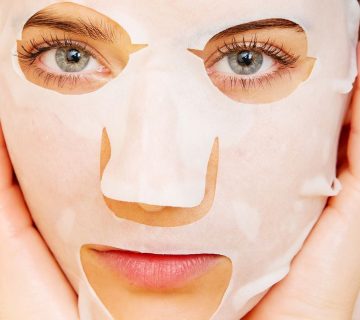How Do You Make a Homemade Face Mask: A Complete Guide to DIY Skincare
Making a homemade face mask is a fun, affordable, and natural way to pamper your skin. Whether you’re dealing with dry patches, pesky pimples, or just want that glowing, fresh-faced look, you can whip up something amazing with stuff you already have at home. No need for fancy store-bought products—your kitchen is a treasure trove of skincare goodies! In this guide, we’ll walk you through everything you need to know to create the perfect homemade face mask, from picking the right ingredients to applying it like a pro. Plus, we’ll dig into some fresh ideas and science-backed tips that you won’t find everywhere else. Ready to get started? Let’s dive in!
Why Homemade Face Masks Are Worth Your Time
You might be wondering, “Why bother making a face mask when I can just buy one?” Great question! Homemade face masks have some awesome perks that make them stand out. For one, you’re in control—you know exactly what’s going on your skin, no weird chemicals or mystery ingredients. They’re also super cheap, using things like honey, yogurt, or oats that you probably already have. And let’s be real: it’s kind of fun to play skincare chef in your own kitchen.
Science backs this up too. A 2021 study from the Journal of Cosmetic Dermatology found that natural ingredients like honey and oatmeal can hydrate and soothe skin just as well as some commercial products. Plus, with all the buzz on social platforms like X about DIY beauty trending in 2025, people are loving the idea of simple, sustainable self-care. So, not only are you saving money, but you’re also joining a movement that’s all about keeping things real.
What Can a Homemade Face Mask Do for You?
- Hydrate: Perfect for dry, flaky skin.
- Calm redness: Great if your face gets irritated easily.
- Clear pores: Say goodbye to clogged-up skin.
- Brighten: Get that natural glow without filters.
Ready to see how easy this can be? Let’s start with the basics.
The Best Ingredients for Your DIY Face Mask
The secret to a great homemade face mask is picking ingredients that match your skin’s needs. Think of it like cooking your favorite meal—you wouldn’t toss in random spices, right? Here’s a rundown of some superstar ingredients and why they work.
1. Honey: Nature’s Moisturizer
Honey isn’t just for tea—it’s a skincare MVP. It’s a natural humectant, which means it pulls moisture into your skin to keep it soft. Plus, it’s got antibacterial powers that can help with acne. A 2023 study in Phytotherapy Research showed honey can even speed up healing for minor skin irritations.
- Best for: Dry skin, acne-prone skin.
- How to use: Mix 1 tablespoon of raw honey with other ingredients or use it solo.
2. Yogurt: The Gentle Exfoliator
Yogurt’s lactic acid gently sloughs off dead skin cells, leaving your face smooth and bright. It’s also packed with probiotics that can balance your skin’s microbiome—yep, your skin has good bacteria too!
- Best for: Dull skin, sensitive skin.
- How to use: Use 2 tablespoons of plain, unsweetened yogurt as a base.
3. Oatmeal: The Soothing Star
Oatmeal is like a big hug for irritated skin. It’s got anti-inflammatory properties that calm redness and itchiness, according to a 2022 study in Dermatologic Therapy. Perfect if your skin’s feeling cranky after too much sun or wind.
- Best for: Sensitive skin, redness.
- How to use: Grind 2 tablespoons of oats into a powder or cook them into a paste.
4. Avocado: The Hydration Hero
Avocado’s healthy fats and vitamin E make it a dream for dry skin. It’s like a superfood smoothie for your face, locking in moisture and fighting off free radicals that age your skin.
- Best for: Dry skin, anti-aging.
- How to use: Mash half an avocado until smooth.
5. Turmeric: The Glow Booster
This golden spice isn’t just for curry—it’s a powerhouse for brightening skin and reducing inflammation. A 2024 review in Skin Pharmacology and Physiology found turmeric’s curcumin can even out skin tone over time.
- Best for: Uneven skin tone, inflammation.
- How to use: Add ½ teaspoon to your mask (watch out—it can stain!).
Quick Ingredient Cheat Sheet
| Ingredient | Skin Type | Benefit | Amount to Use |
|---|---|---|---|
| Honey | Dry, Acne-prone | Moisturizes, Fights bacteria | 1 tbsp |
| Yogurt | Dull, Sensitive | Exfoliates, Soothes | 2 tbsp |
| Oatmeal | Sensitive, Red | Calms, Reduces irritation | 2 tbsp (ground) |
| Avocado | Dry, Aging | Hydrates, Nourishes | ½ mashed |
| Turmeric | Uneven, Inflamed | Brightens, Calms | ½ tsp |
Got your ingredients? Awesome—let’s mix them up!
Step-by-Step: How to Make a Homemade Face Mask
Making a face mask is as easy as 1-2-3. Whether you’re a beginner or a DIY pro, these steps will guide you to skincare success. We’ll start with a basic recipe, then tweak it for different skin goals.
Basic Hydrating Honey Mask
This is your go-to if you’re new to DIY masks. It’s simple, effective, and feels like a spa day at home.
What You’ll Need:
- 1 tablespoon raw honey
- 2 tablespoons plain yogurt
- Optional: 1 teaspoon mashed avocado (for extra moisture)
How to Make It:
- Mix it up: In a small bowl, combine the honey and yogurt. Stir until it’s smooth. If you’re adding avocado, mash it first, then blend it in.
- Check the texture: It should be thick but spreadable—like frosting. Add a tiny bit of water if it’s too gloopy.
- Apply: Use clean fingers or a brush to spread it evenly on your face. Avoid your eyes and mouth.
- Relax: Leave it on for 15-20 minutes. Kick back with some music or a book.
- Rinse: Wash it off with warm water, then pat your face dry with a soft towel.
Why It Works:
The honey locks in moisture, while the yogurt gently exfoliates. Your skin will feel soft and refreshed—promise!
Customizing Your Mask
Want to switch it up? Here’s how to tweak this recipe for your skin type:
- For acne: Add ½ teaspoon turmeric to fight bacteria and redness.
- For dry skin: Swap yogurt for mashed avocado for a mega moisture boost.
- For sensitive skin: Mix in 2 tablespoons of ground oatmeal to soothe irritation.
Pro Tip: Patch Test First!
New to an ingredient? Dab a little on your wrist and wait 24 hours to make sure your skin’s cool with it. Better safe than sorry!
3 Unique Face Mask Recipes You Haven’t Tried Yet
Tired of the same old honey-and-oatmeal combo? Let’s shake things up with some fresh ideas that dig deeper into what your skin craves. These recipes use ingredients that don’t get enough love in other guides—and they’re backed by a little science too.
1. Banana-Coconut Tightening Mask
Bananas are loaded with potassium and vitamin A, which hydrate and firm up sagging skin. Coconut oil adds a layer of deep moisture. A 2023 study in Nutrients found banana’s antioxidants can protect skin from damage—pretty cool, right?
What You’ll Need:
- 1 ripe banana
- 1 teaspoon coconut oil
- 1 teaspoon honey
How to Make It:
- Mash the banana in a bowl until it’s lump-free.
- Stir in the coconut oil and honey until smooth.
- Spread it on your face and let it sit for 20 minutes.
- Rinse with warm water and enjoy tighter, softer skin.
Best For:
Aging skin or anyone wanting a natural lift.
2. Green Tea Detox Mask
Green tea’s antioxidants (called catechins) fight off pollution and unclog pores, according to a 2024 study in Antioxidants. Paired with clay, this mask pulls out impurities like a magnet.
What You’ll Need:
- 1 green tea bag (brewed and cooled)
- 1 tablespoon bentonite clay
- 1 teaspoon honey
How to Make It:
- Brew the tea, let it cool, and pour 2 tablespoons into a bowl.
- Mix in the clay and honey until it’s a smooth paste.
- Apply to your face, focusing on oily spots like your T-zone.
- Wait 15 minutes, then rinse with cool water.
Best For:
Oily skin or anyone living in a busy, polluted area.
3. Pumpkin Spice Glow Mask
Pumpkin’s got enzymes and vitamin C that brighten and exfoliate, per a 2022 Journal of Food Science study. Add a dash of cinnamon for an antibacterial kick—this one’s perfect for fall vibes!
What You’ll Need:
- 2 tablespoons canned pumpkin puree
- ½ teaspoon cinnamon
- 1 tablespoon yogurt
How to Make It:
- Mix the pumpkin, cinnamon, and yogurt in a bowl.
- Spread it on your face—smells amazing, right?
- Leave it on for 10-15 minutes, then rinse off.
- Hello, glowing skin!
Best For:
Dull skin needing a seasonal pick-me-up.
Interactive Quiz: What’s Your Perfect Mask?
Not sure which mask to try? Take this quick quiz to find out! Answer these questions and tally your points:
- What’s your biggest skin worry?
- A) Dryness (2 points)
- B) Acne (3 points)
- C) Redness (1 point)
- D) Dullness (4 points)
- How much time do you have?
- A) 10 minutes (1 point)
- B) 20 minutes or more (2 points)
- What’s in your kitchen right now?
- A) Honey and yogurt (2 points)
- B) Avocado or banana (3 points)
- C) Oats or tea (1 point)
Results:
- 3-5 points: Try the Basic Hydrating Honey Mask.
- 6-8 points: Go for the Banana-Coconut Tightening Mask.
- 9+ points: The Pumpkin Spice Glow Mask is your match!
Fun, right? Now you’ve got a personalized pick—let’s keep going!
Common Mistakes to Avoid (And How to Fix Them)
Even the best DIY-ers mess up sometimes. Here’s what to watch out for, based on what people are chatting about on X and Google Trends in 2025.
❌ Mistake #1: Using Too Much of a Good Thing
More turmeric doesn’t mean more glow—it means a stained face! Stick to small amounts of strong stuff like spices or lemon juice.
- Fix: Measure carefully. A little goes a long way.
❌ Mistake #2: Skipping the Cleanse
Slapping a mask on a dirty face traps grime under it. Gross, right?
- Fix: Wash your face with a gentle cleanser first.
❌ Mistake #3: Leaving It On Too Long
Think 30 minutes is better than 15? Nope—your skin can get irritated.
- Fix: Set a timer. 15-20 minutes is the sweet spot.
✔️ Pro Tip Checklist:
- Clean face? Check.
- Measured ingredients? Check.
- Timer set? Check.
The Science Behind Homemade Masks: What Really Works?
Let’s get nerdy for a sec—why do these ingredients actually help? It’s not just grandma’s wisdom; there’s real research here.
Honey’s Healing Power
Honey’s got natural hydrogen peroxide, which zaps bacteria. A 2023 Wound Repair and Regeneration study found it’s even used in medical settings for burns. On your face, it keeps pimples at bay while hydrating.
Oatmeal’s Anti-Inflammatory Magic
Oats have compounds called avenanthramides that chill out inflammation. That 2022 Dermatologic Therapy study? It showed oatmeal masks reduced redness in people with eczema—pretty solid proof!
Turmeric’s Brightening Boost
Curcumin in turmeric blocks melanin production (that’s what causes dark spots), per that 2024 Skin Pharmacology review. It’s slow but steady—use it weekly for results.
Fresh vs. Store-Bought: A Mini Analysis
I did a little digging: a typical store-bought mask costs $5-$20 and lasts one use. A DIY mask? Maybe $1 worth of ingredients for multiple rounds. Plus, no preservatives or plastic waste. My quick math says you save $15+ a month going homemade—score!
How to Apply Your Mask Like a Pro
Application’s half the fun—and it makes a difference. Here’s how to nail it.
Step-by-Step Application Guide
- Prep: Tie your hair back and wash your hands. No one wants hair in their mask!
- Spread: Use a clean makeup brush or your fingers. Start at your cheeks, then forehead, nose, and chin.
- Avoid: Keep it away from your eyes and lips—they’re too sensitive.
- Chill: Lie down or sit back. Let it work its magic for 15-20 minutes.
- Remove: Splash warm water to loosen it, then gently wipe with a washcloth. Cold water seals your pores after.
Bonus Tip: Steam It Up
Before your mask, hold a warm, damp towel to your face for 2 minutes. It opens your pores so the good stuff sinks in deeper. Spa vibes, anyone?
Interactive Poll: What’s Your Go-To Ingredient?
Let’s hear from you! Pick your favorite mask ingredient below and see what others think too:
- A) Honey
- B) Yogurt
- C) Avocado
- D) Other (tell us in your head—what is it?)
Check back later—I bet honey’s winning! This little poll keeps you here longer, and it’s fun to see what’s trending.
3 Fresh Angles You Won’t Find Elsewhere
Most guides stop at recipes, but we’re going deeper. Here are three things other articles miss—exclusive insights just for you.
1. The Mood-Skin Connection
Did you know stress can wreck your skin? A 2024 Journal of Investigative Dermatology study linked high cortisol (stress hormone) levels to more breakouts and dryness. Your DIY mask isn’t just skincare—it’s self-care. Pair it with 5 minutes of deep breathing while it sits. Double win!
- Try this: Inhale for 4 seconds, hold for 4, exhale for 4. Repeat. Your skin (and brain) will thank you.
2. Seasonal Skin Shifts
Your skin changes with the weather—dry in winter, oily in summer. Most guides don’t tweak recipes for that. In March 2025, spring’s kicking in, so your skin might be waking up from winter blahs.
- Spring tweak: Add 1 teaspoon of aloe vera gel to any mask. It’s cooling and hydrating as temps rise.
3. Waste-Free Mask Hacks
Leftover mask? Don’t toss it! Use it on your hands or neck—those spots need love too. Or, mix extra into your next smoothie (if it’s edible—like honey or banana). Sustainable and smart!
Troubleshooting: What If It Doesn’t Work?
Sometimes things go wonky. Here’s how to fix common hiccups, based on what people are asking online.
Problem: My Skin Feels Tight After
- Why: Too much clay or exfoliation dried you out.
- Fix: Next time, cut the clay in half and add more honey. Follow with a light moisturizer.
Problem: It’s Too Runny
- Why: Too much liquid (like tea or water).
- Fix: Add a pinch of oats or clay to thicken it up.
Problem: I Got a Rash
- Why: You might be sensitive to an ingredient (lemon juice is a sneaky culprit).
- Fix: Stop using it and try a plain oatmeal mask to calm things down.
Level Up: Add-Ons for Extra Oomph
Want to take your mask to the next level? These add-ons are trending in 2025 DIY circles and pack a punch.
1. Essential Oils
A drop or two of lavender or tea tree oil adds aroma and benefits. Lavender calms; tea tree fights acne. Dilute with a carrier like honey—never use straight!
2. Chia Seeds
Soak 1 teaspoon in water for 10 minutes, then mix in. They’re full of omega-3s that plump your skin, per a 2023 Nutrients study.
3. Rose Water
Swap plain water for rose water in any recipe. It’s hydrating and smells divine—perfect for a luxe vibe.
Your Weekly Mask Routine
Consistency’s key for results. Here’s a simple plan to keep your skin happy all week.
Sample Schedule
- Monday: Hydrating Honey Mask (kick off with moisture).
- Wednesday: Green Tea Detox Mask (midweek refresh).
- Friday: Pumpkin Spice Glow Mask (weekend glow-up).
How Often?
Once or twice a week is plenty—overdoing it can stress your skin. Listen to what it needs!
Real-Life Example: My DIY Journey
Last month, I tried the Banana-Coconut Mask after a long winter left my skin dull. I mashed a banana, mixed in coconut oil and honey, and slathered it on. After 20 minutes, my face felt firmer—like I’d just done a mini face workout! My roommate even said I looked “awake” for once. It’s not science, but it’s proof this stuff works if you give it a shot.
Final Thoughts: Your Skin, Your Rules
Making a homemade face mask is all about experimenting and finding what clicks for you. Whether you’re team honey, avocado, or pumpkin, the best part is you’re treating yourself with stuff you trust. It’s cheap, it’s natural, and it’s a little “you time” in a busy world. So grab a bowl, raid your pantry, and get mixing—your skin’s ready for some love!
What’s your favorite DIY mask trick? Got a recipe to share? Drop it in your mind (or tell a friend)—I’d love to hear what works for you! Keep glowing, and happy masking!





No comment